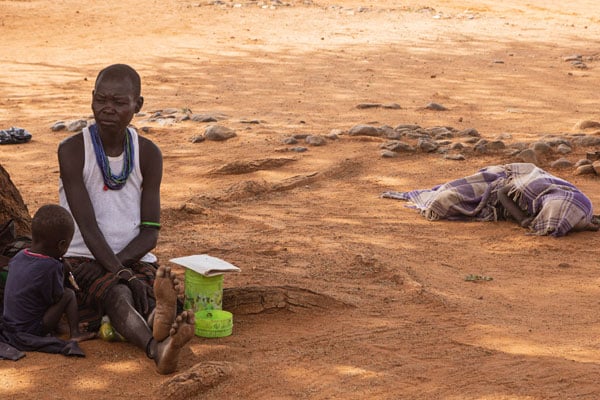Prime
Food shortage hits Teso

The cabinet is seeking Shs 52.6 billion to provide food and water relief to the vulnerable households facing starvation due to widespread food shortages. Photo by Rachel Mabala
What you need to know:
- Vice President Jessica Alupo was in Katakwi handing over houses to families that lost their members during the ruling National Resistance Movement (NRM) party primaries in 2020.
An acute food shortage across most parts of Teso Sub-region has started to bite as prices for vital household food stuff hit record high in key markets, this publication has established.
The nearest food harvest in the sub-region is expected in the next two months.
The price for maize flour, which is widely consumed in the area, has risen from Shs2,000 last month to between Shs3,000 and Shs4,000 per kilogramme.
Cassava, also a key staple food in the sub-region, now goes for Shs2,500 per kilogramme, up from Shs1,200 about two months ago.
In Kapujan Sub-county, Katakwi District, cases of cooked food being stolen from the kitchen have been reported by local leaders.
Last Sunday, the leaders made pleas to the Office of the Vice President to give locals food relief.
Vice President Jessica Alupo was in Katakwi handing over houses to families that lost their members during the ruling National Resistance Movement (NRM) party primaries in 2020.
The Katakwi District chairperson, Mr Joseph Ojuman, who attributed the current food crisis to last year’s crop failure as result of bad weather, said families are finding it hard to feed their children because the cost of buying food has become unaffordable.
Food issue
“A basin of dry cassava is being sold at Shs40,000, which is to expensive for the locals. People are now selling their livestock to survive,” he said.
Mr Ojuman said the district does not expect a good harvest from the current season because it was hugely affected by poor rains.
The groundnuts have withered away in many gardens because of too much sunshine.
“It is our appeal that the Disaster ministry offers a helping hand to the vulnerable households,” Mr Ojuman added.
Mr Augustine Okello, the chairperson of Apule Village in Kapujan Sub-county, said communities near the shores of Lake Bisina such as Kapujan should be helped to harness the water through irrigation.
“I am the village chairperson, but even in my home, we are only having porridge for lunch. A proper meal is served once for dinner just to enable us wake up strong and do some field work,” he said.
He explained that the current food crisis is as result of crop failure of millet, sorghum and cassava, which are staple foods in the district.
Mr Nelson Mandela Elungant, the Kumi District chairperson, said the impact of the food crisis is worse in the areas of Ongino on the shores of Lake Bisina where the rains have become elusive in the last 10 years.
He said people are finding it hard to make ends meet at a time when the cost of living has become so severe.
Mr Elungant said by Tuesday, the price of a basin of dry cassava had reached Shs50,000, yet it cannot sustain even a small-sized family for a week.
“I believe this is the time we need to help the people who are literally starving,” he stated.
The situation is not any different in Ngora District.
The district chairperson, Mr Mike Odongo, said the district early this year witnessed a severe invasion of the fall armyworms and a strange disease, which destroyed cassava gardens in areas of Mukura, Kapir and Ngora sub-counties.
Effect
Leaders in the area say the situation is so dire that people are now stealing cooked food from kitchens.




